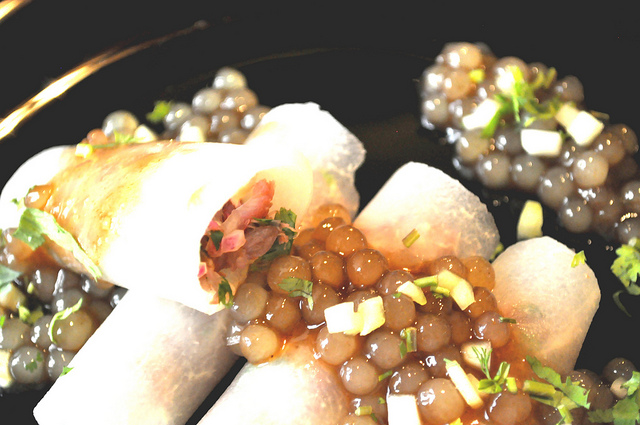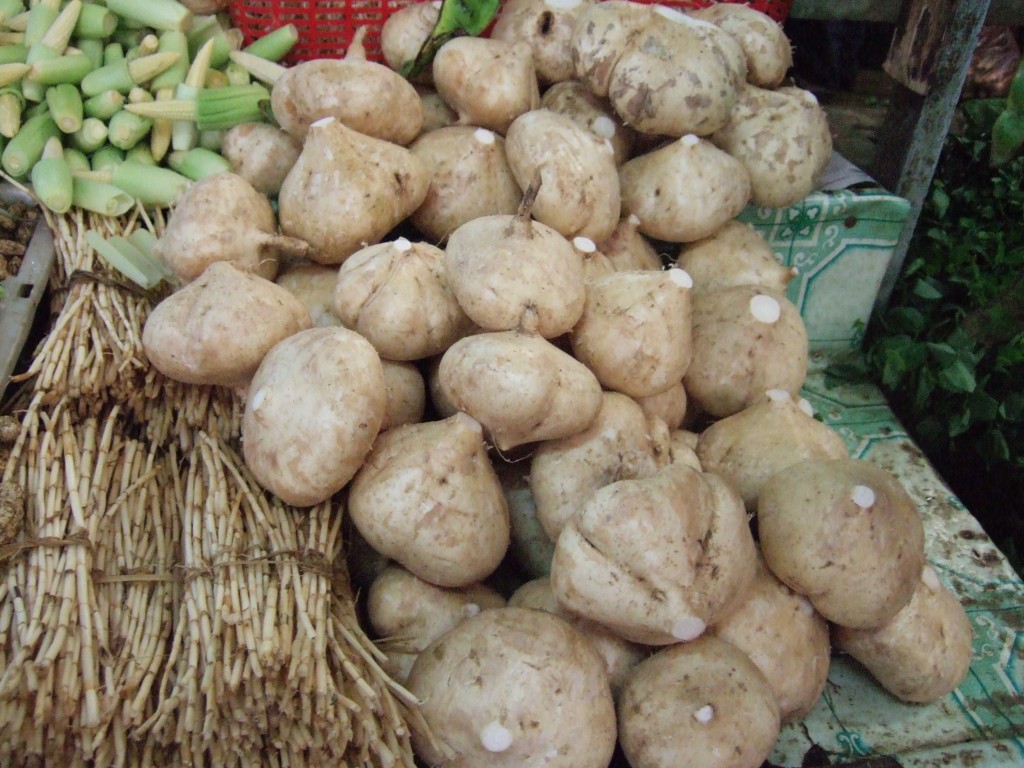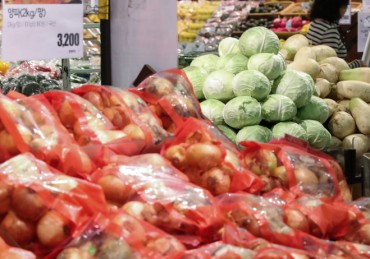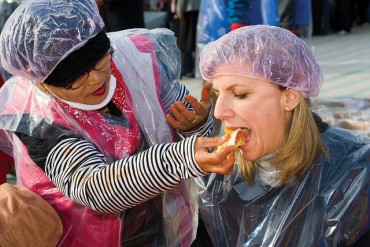
Jicama, one of “20 More of the Healthiest Foods in the world” selected by the Huffington Post, is famous for its effectiveness to relieve diabetes, high blood pressure, colorectal cancer, skin problems, constipation and diet. (image: Jicama (Pachyrhizus erosus) tacos filled with crab meat by Luna sin estrellas/flickr)
SEOUL, Oct. 23 (Korea Bizwire) — Global warming and climate change have not just resulted in the world-wide rush to develop alternative energy or eco-friendly vehicles.
The seemingly inescapable phenomenon has impacted on a huge chunk of arable lands across the globe. Climate change can affect both crop yield and the land area suitable for agriculture.
A study published in Science suggests that, due to climate change, “southern Africa could lose more than 30% of its main crop, maize, by 2030. In South Asia losses of many regional staples, such as rice, millet and maize could top 10%”.
Korea is no exception: Overall landscape of cultivable lands in the nation has gone through a significant change. In response to climate change, farmers had to come up with much suitable plants optimized for ‘changed weather’ that are alternative plants.
Jicama falls on such categories. Damyang County in Jeollanam-do, South Korea, selected Jicama as one of its main alternative plants in response to climate change, has generated meaningful results for their efforts to that end.
Damyang Agricultural Technology Center, announced on October 22 that, it succeeded in cultivating Jicama in four areas — each with different soils and their weathering profiles — including mountainous territories, plains and a lab in the center in Damyang-gun.

Jicama is an edible root that resembles a turnip. It has thin brown skin and crisp, juicy, white flesh that’s mild in flavor and is a very low calorie root vegetables. (Wikimedia Commons)
Jicama, also known as Mexican yam or Mexican turnip, one of “20 More of the Healthiest Foods in the world” selected by the Huffington Post, is famous for its effectiveness to relieve diabetes, high blood pressure, colorectal cancer, skin problems, constipation and diet.
Jicama is an edible root that resembles a turnip. It has thin brown skin and crisp, juicy, white flesh that’s mild in flavor and is a very low calorie root vegetables making it among the best candidates for healthy recipes, lucrative food area for increasingly health-conscious Korean consumers.
When it comes to Damyang, bamboo goods and strawberries are well-known local products of this highly touristy area. So, successful commercialization of Jicama might bring about another important revenue stream to this scenic land.
By Lina Jang (lina@koreabizwire.com)






